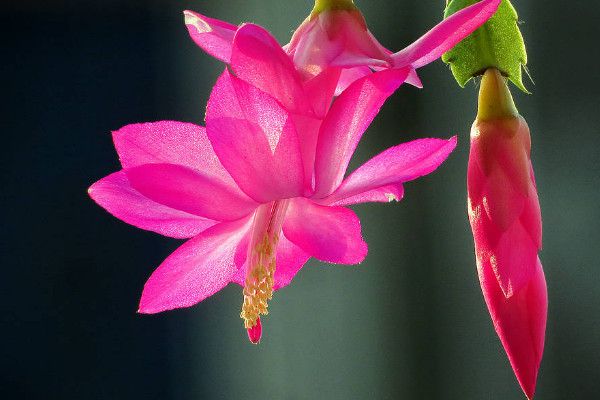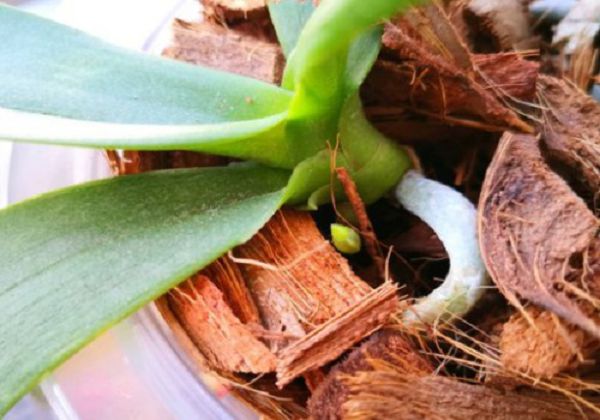How does windmill jasmine plant? Pot planting method of windmill jasmine

Windmill jasmine is an evergreen woody vine of the genus oleander. Its flowers are as white as jade and its five petals form a rotating windmill, which looks romantic and fresh. Windmill jasmine and jasmine do not have much relationship, but its flower quantity is larger than jasmine, florescence can reach more than 200 days a year, the growth rate is particularly fast, two years can climb 20 meters of fence, more importantly, windmill jasmine is very rich, there is "the world's first fragrance" laudatory name, today we will talk about potted windmill jasmine maintenance methods, the focus is to achieve extensive conservation.
First, choose a large flowerpot, the soil is rich in organic matter
The growth ability of windmill jasmine is very strong, not only the growth rate is fast, but also the root system is relatively developed, so when we raise windmill jasmine, we should leave enough space for it to grow, and the soil should be loose and permeable. The only weakness of windmill jasmine is the fear of pots of water.
1. Flowerpots: when planting windmill jasmine, we choose a large flowerpot for it as much as possible, that is to say, the larger the flowerpot, the greater the space for the growth of windmill jasmine, and the faster its growth rate will be. but when choosing flowerpots, we should not only focus on choosing large flowerpots, but also pay attention to the water permeability and air permeability of flowerpots. It is best to choose Castle Peak pots or gallon pots. The more water holes in the walls and bottom of the flowerpots, the better. The editor is here to provide you with a reference scheme. If we use gallon pots, we can directly use 5-gallon oversized flowerpots.
2. Soil: windmill jasmine itself does not have high requirements for soil, but it has strong growth ability and serious consumption of nutrients, so when allocating soil to windmill jasmine, it must be rich in nutrients and rich in organic matter. it is best to add some long-acting slow-release fertilizer or chicken manure and sheep manure to the pot soil as base fertilizer, and the only weakness of windmill jasmine is the fear of stagnant water in flowerpots. Therefore, the soil should also take into account the water and air permeability, preferably about 30% of the granular soil.
After selecting the flowerpot and soil, we also need to cover the bottom of the flowerpot with broken ceramsite or upside-down tiles as a water seepage layer, so as to further ensure the dryness and air permeability of the windmill jasmine flowerpot. minimize the probability of stagnant water.
Third, equipped with support points, flower racks and fences are fine
Windmill jasmine is a very strong climbing vine plant, only when there is a support point, it can grow normally and rapidly.
We can directly build a flower rack for the potted windmill jasmine, choose a larger one as far as possible, fix the branches of the windmill jasmine on the flower rack, and pay attention to the outward flower bud when fixed, so that the windmill jasmine will grow outward and bloom on the outside of the flower rack, while the center of the flower rack becomes a hollow tube, which is conducive to ventilation and can reduce the occurrence of diseases and insect pests. And it is also helpful for the growth of windmill jasmine.
If there is a fence or fence at home, then we can also put the flowerpot of windmill jasmine next to the fence, so that windmill jasmine will climb along the fence on its own, and we can fix the branches of windmill jasmine according to our own needs and make it into the shape we want.
Third, windmill jasmine has a strong ability to adapt to light, and its growth rate can be changed by controlling light.
In principle, windmill jasmine is very light-loving. The more light it shines, the faster it grows, the more flowers it blossoms, and the more fragrance it has. But if it is a potted windmill jasmine, sometimes it will become a sweet worry when it grows too big, and we have to prune it frequently, so in actual maintenance, we can change the growth rate of windmill jasmine by controlling the light.
If we want windmill jasmine to grow and blossom in large numbers as soon as possible, we should bask it in the sun as much as possible, even in hot summer. Under sufficient light conditions, windmill jasmine will continue to blossom and grow 10 meters a year.
And if we want to save space to create shape, want to control the growth rate of windmill jasmine, then we can reduce the light, as for how much, we have to determine according to our own needs, if you want it to stop growing or very slow growth, then give it an hour or two of light every day, windmill jasmine can also survive healthily, but the number of blossoms will also decrease.
IV. Extensive fertilization and coordinated use of various fertilizers
Windmill jasmine is characterized by fast growth, large flowering and long flowering period, but the combination of these three characteristics leads to the consumption capacity and demand for fertilizer of windmill jasmine far exceed that of ordinary flowers, so if we want to raise windmill jasmine well, we must do a good job of fertilization. Fertilization can be extensive, the frequency of fertilization is large, the amount of fertilizer should also be relatively large, and the three kinds of fertilizers should be used together.
1. Three-element balanced compound fertilizer: the three-element balanced compound fertilizer is mainly used in the growing period of windmill jasmine, and it can also be used for windmill jasmine throughout the year, with a high frequency of use every 10 days, and it is best to choose water-soluble fertilizer. 1000 times diluted with water, directly irrigate the windmill jasmine. If in order to enhance the effect of fertilizer, you can also cooperate with long-acting slow-release fertilizer, spread long-acting slow-release fertilizer on the surface of the basin soil, sprinkle it once every two or three months, and let it infiltrate into the basin soil of windmill jasmine with watering to nourish its roots.
2. Phosphorus and potassium fertilizer: phosphorus and potassium fertilizer has a great help effect on the germination of flower bud and bud of windmill jasmine, so we can apply phosphorus and potassium fertilizer to windmill jasmine in spring, and the frequency of phosphorus and potassium fertilizer should be maintained at once every 7 days. but the dilution concentration is also higher, it is best to dilute 1500 times with water, spray leaves and irrigate roots together.
3, organic base fertilizer: windmill jasmine grows fast, the root system load is large, and the nutrient consumption for the basin soil is also quite serious. in order to maintain a healthy growth environment of windmill jasmine, we try to add base fertilizer to it in the basin soil. fermented chicken manure and sheep manure can be used, or plant fertilizer, such as mature peanut shell or bean cake, can be used to maintain soil fertility. And even so, we have to change the pot and soil of windmill jasmine at least every 2-3 years to ensure its root system is healthy.
Tip: in order to prolong the flowering period of windmill jasmine, we can give windmill jasmine a little trace element fertilizer every month, such as calcium and magnesium fertilizer, not too much, about 2 grams per month.
Don't be too diligent in watering, dry the soil quickly and then water it thoroughly.
Windmill jasmine rarely produces diseases and insect pests and can withstand a low temperature of minus 10 degrees Celsius, but the only thing it is afraid of is stagnant water in flowerpots, so we don't have to work too hard to keep the soil slightly moist. Or just water the windmill jasmine when the soil is almost dry.
The windmill jasmine plant is relatively large, and the soil consumption and load are very serious, so when watering the windmill jasmine, we can water it with a little rice water every month, which can prevent the soil from hardening and ensure that the roots of the windmill jasmine are not damaged.
Pay attention to the position
Windmill jasmine belongs to the family Apocynaceae, and it also inherits the toxicity of oleander plants, that is to say, windmill jasmine is poisonous, but it doesn't matter when we watch and touch it, as long as we are careful not to eat it by mistake. But if you have children or pets at home, try to keep less windmill jasmine, or put windmill jasmine in a higher position so that children can't touch it.
In addition, the fragrance of windmill jasmine is very strong, but it is different from that of jasmine. The scent of jasmine becomes more and more comfortable, but it will make people feel dizzy and nauseous after smelling it for a long time. This is not a sign of poisoning, but is caused by the strong fragrance of flowers and the characteristics of the fragrance itself, so we try not to put it indoors during the flowering period of windmill jasmine. Choose a place with good ventilation and enough light to raise windmill jasmine.
Windmill jasmine has strong growth ability and excellent adaptability to the environment. Basically, it can be said that windmill jasmine is not afraid of cold or heat, and there are no diseases and insect pests, but it is only afraid of stagnant water in flowerpots. We should choose large flowerpots when selecting pots, pay attention to nutrition and water permeability when allocating soil, adjust the growth rate of windmill jasmine through light, fertilize frequently and quickly, and the final placement should pay attention to ventilation and ventilation as far as possible. After doing well the above points, your windmill jasmine can blossom for more than 200 days a year.
Related
- Fuxing push coffee new agricultural production and marketing class: lack of small-scale processing plants
- Jujube rice field leisure farm deep ploughing Yilan for five years to create a space for organic food and play
- Nongyu Farm-A trial of organic papaya for brave women with advanced technology
- Four points for attention in the prevention and control of diseases and insect pests of edible fungi
- How to add nutrient solution to Edible Fungi
- Is there any good way to control edible fungus mites?
- Open Inoculation Technology of Edible Fungi
- Is there any clever way to use fertilizer for edible fungus in winter?
- What agents are used to kill the pathogens of edible fungi in the mushroom shed?
- Rapid drying of Edible Fungi



